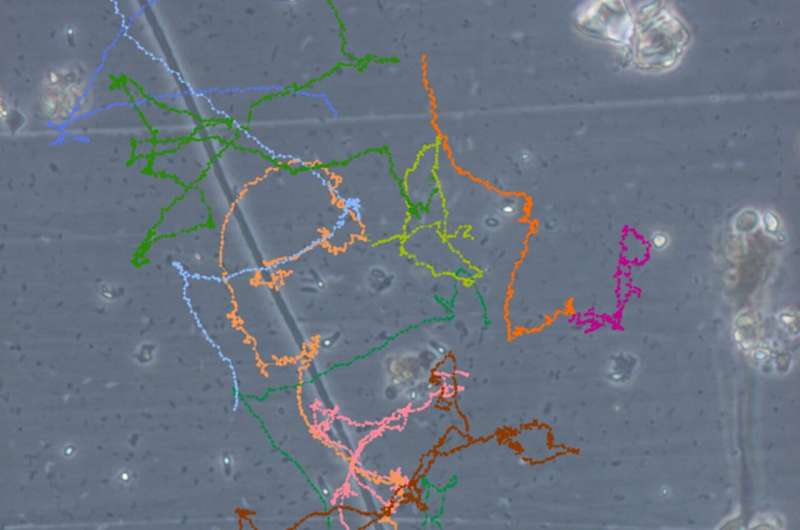This article has been reviewed according to Science X's editorial process and policies. Editors have highlighted the following attributes while ensuring the content's credibility:
fact-checked
peer-reviewed publication
trusted source
proofread
Cutting cable bacteria with a laser puts an end to a bacterial party

The party-poopers cutting the cable bacteria are researchers from the Center for Electromicrobiology (CEM) at Aarhus University. The center's work focuses on unraveling the mysteries of how cable bacteria work.
Cable bacteria are centimeter long, wire-shaped bacteria equipped with internal wiring that transports electrons between oxygen-rich and oxygen-free "dead" zones in the muddy seabed.
The first person to stop the party was Ph.D. student Jesper Jensen Bjerg. Many years ago, he was sitting in a laboratory at the University of Vienna, struggling to follow the transport of electrons in cable bacteria by measuring the differences in the amount of electrons present in the bacteria's cytochrome proteins. (The protein is important for the energy metabolism of cells.)
"As I became more and more impatient, I suddenly discovered something unexpected in the microscope: Hundreds of different bacteria flocked around the part of a cable bacteria that was in an oxygen-free environment. It looked like they were dancing and having a great time," says Jesper Jensen Bjerg, who is now a postdoc at CEM.
He later discovered that the party stopped when he cut the cable bacteria with a laser.
Years of effort
His discoveries led to years of effort by the researchers at CEM to explain the phenomenon. And they have now published their preliminary results in the journal Nature Communications.
The interesting thing is not the party culture of bacteria, but what happens chemically/physically between the cable bacteria and their tiny neighbors, and what each of them get out of the interaction.
"The smaller bacteria are all aerobic, i.e. they need oxygen, and they obviously benefit greatly by transferring electrons to the cable bacteria and thereby getting an electrical connection to oxygen. But we don't yet know how the electrons are actually transferred to the cable bacteria. And we don't know how this affects the cable bacteria. Does it benefit or harm them? Or doesn't it matter to them at all?" asks Professor Andreas Schramm, deputy director of CEM.
Lots of questions ahead
However, the research group has shown that the small bacteria are metabolically active and that the cytochromes in their cells are more oxidized (in other words, release electrons) when they are close to a cable bacteria. This means that the small bacteria are carrying out extracellular electron transfer (EET).
But the discovery of the party in the mud raises more questions than it has so far answered. The researchers themselves list the questions in their scientific article:
- How widespread and important are these interactions in the seabed?
- What specific molecules mediate the interactions, and how and where are they processed in the cells on either side?
- How much of the current in a cable bacterium arises from the bacterial flocks around it, and what share may the flock gain of the energy that the cable bacteria could otherwise have?
- Is the interaction beneficial or detrimental for the cable bacterium, and is it controlled in any way?
- Are there interactions with other, non-motile cells in the natural sediment environment, and what is the full palette of microbial processes stimulated by the electrical shortcut to oxygen offered by cable bacteria?
More information: Jesper J. Bjerg et al, Cable bacteria with electric connection to oxygen attract flocks of diverse bacteria, Nature Communications (2023). DOI: 10.1038/s41467-023-37272-8
Journal information: Nature Communications
Provided by Aarhus University



















